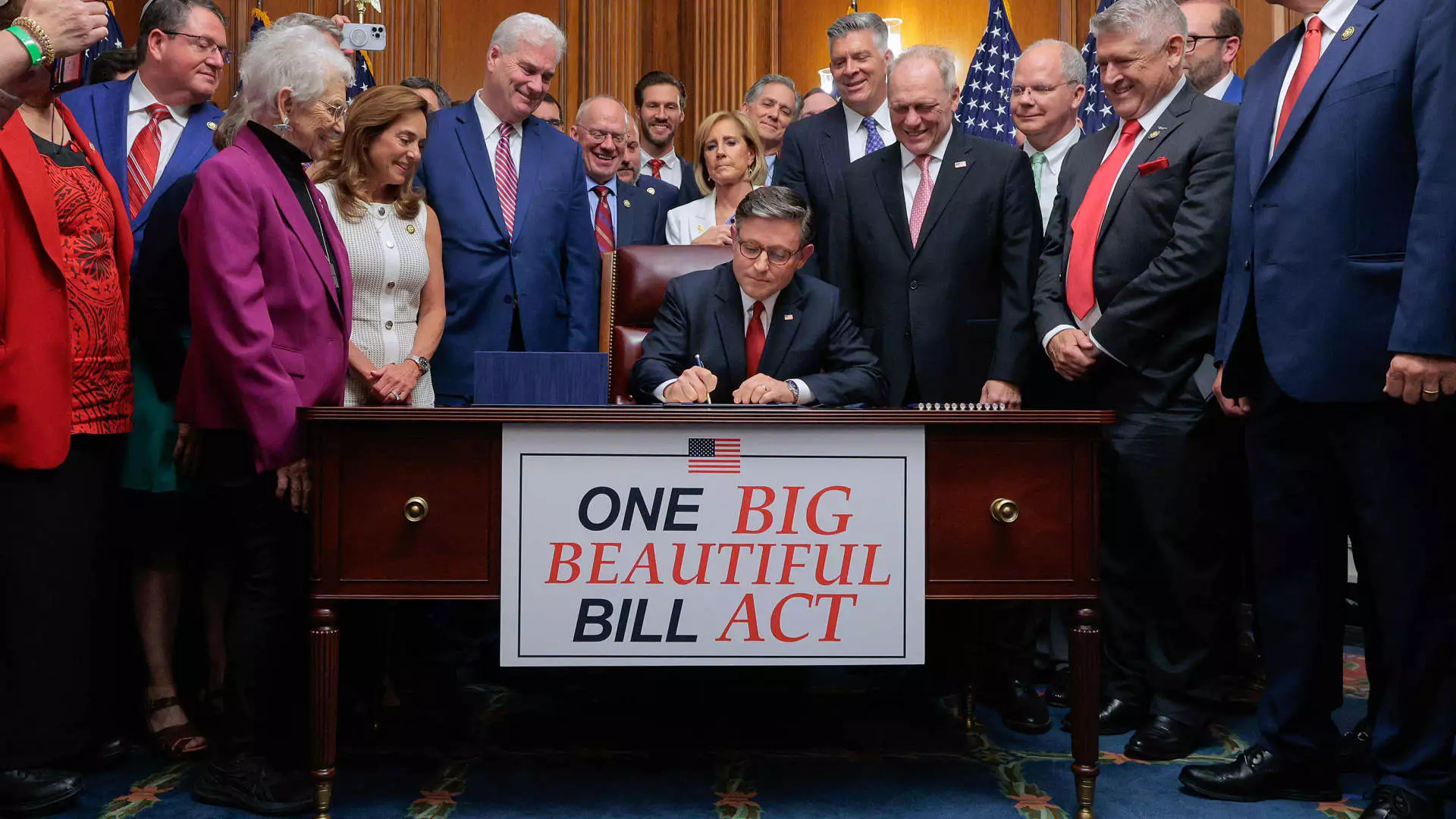The recent enactment of President Trump’s so-called “big beautiful bill” promises significant tax relief for many Americans. Yet, beneath the surface lies a complex landscape that could easily obscure the true impact for most taxpayers. While the legislation boasts permanent tax cuts from 2017, the claims of broad-based benefits mask a more nuanced reality: the gains are skewed toward higher earners and those in specific financial circumstances. For middle-income families, the supposed relief might be minimal or even illusory once the effects of increased caps, phase-outs, and reduced deductions are factored in.
This law boldly promotes the idea of strengthening working-class families with higher standard deductions and expanded child benefits. But in practice, such benefits are diluted by the increasing complexity and targeted carve-outs that favor wealthier households. The increased standard deduction, for example, offers a modest $750 increase for single filers and $1,500 for joint filers—hardly a game-changer for many. Meanwhile, the benefits for high-income earners, such as the SALT deduction modifications, present a double-edged sword that could unexpectedly escalate their tax burdens through the so-called “SALT torpedo.”
The “SALT Torpedo”: A Double-Edged Sword
One of the most controversial aspects of the new legislation is the temporary adjustment to the SALT deduction cap. While increasing the limit from $10,000 to $40,000 initially appears to benefit taxpayers with significant state and local taxes, it introduces a perplexing and potentially devastating phase-out for high earners. For income levels between $500,000 and $600,000, the benefit diminishes dramatically, and some experts have labeled this a “SALT torpedo” because it effectively nullifies or even backfires on individuals within that middle-high income bracket.
The unintended consequence? The artificial inflation of marginal tax rates up to 45.5% for certain high earners, creating a disincentive for investments and savings. This targeted design seems more like a punitive measure for wealthier taxpayers rather than a genuine attempt to foster economic growth or fairness. It raises questions about whether this legislation truly supports the middle class or if it primarily favors the wealthy—an issue that most Americans should scrutinize carefully.
The Complexity of Temporary Benefits: A False Sense of Security
Adding to the confusion are the temporary tax provisions, such as the increased child tax credits, bonuses for older Americans, and deductions for specific expenses. While these perks might seem advantageous on paper, they are inherently short-lived and are unlikely to be renewed or extended, leaving many taxpayers vulnerable once the bills expire. For example, the $6,000 “bonus” deduction for seniors over 65 is a temporary relief that may be gone as quickly as it arrived, forcing many to reconsider their financial plans without stable support.
More concerning is the expiration of the expanded premium tax credits introduced during the pandemic, which sharply reduced healthcare costs for millions. Failure to extend these credits will likely cause premiums to spike precipitously starting in 2026, pushing many families into financial strain or forcing them to reconsider their healthcare options altogether. This looming cliff demonstrates how fragile and unpredictable the current legislative landscape is—further undermining the notion of comprehensive, long-term economic stability.
The Myth of Simplicity: A Trap for the Unwary
Perhaps the most insidious aspect of this legislation is its veneer of simplicity. The truth is, the updated laws and provisions introduce layers of complexity that only seasoned tax professionals or financial advisors can navigate effectively. For ordinary Americans, understanding how these changes influence their individual circumstances is nearly impossible without expert guidance.
This complexity often works against middle- and lower-income households, who lack the resources or knowledge to optimize their tax strategies. Without careful planning, they risk forfeiting valuable deductions, credits, or benefits simply because they are unaware of loopholes or phase-outs. The legislation’s incremental changes create a landscape where ignorance becomes costly—a reality that should concern anyone who believes taxation should be fair and transparent.
Who Really Gains from the Legislation?
Ultimately, this law illustrates the fundamental myth of broad-based tax reform—raising revenue under the guise of aid for the working class while subtly shifting the burden onto middle-income earners. Wealthier individuals and corporations stand to benefit disproportionately, often securing larger deductions, credits, and loopholes that diminish their effective tax rate. Meanwhile, typical taxpayers are caught in a complex web of phase-outs, caps, and temporary provisions that obscure the true extent of their tax obligations.
The legislation also raises questions about fiscal sustainability. By temporarily expanding certain benefits and making others permanent, the government sets the stage for future deficits and fiscal tightening. This balancing act between short-term relief and long-term fiscal health feels more like political maneuvering than a genuine commitment to economic fairness.
In an era where economic inequality continues to widen, this legislation exemplifies a critical disconnect: it offers the veneer of support for working families while leveraging loopholes and targeted benefits that ultimately favor the wealthy. Americans deserve transparency, fairness, and a tax code that simplifies their financial lives—not one riddled with artificial incentives and hidden traps.


Leave a Reply